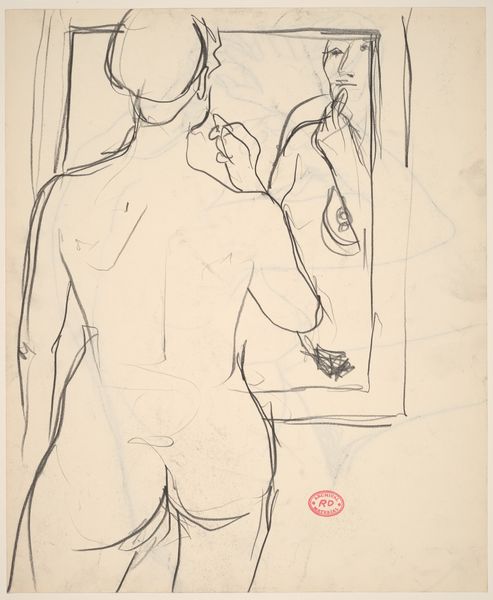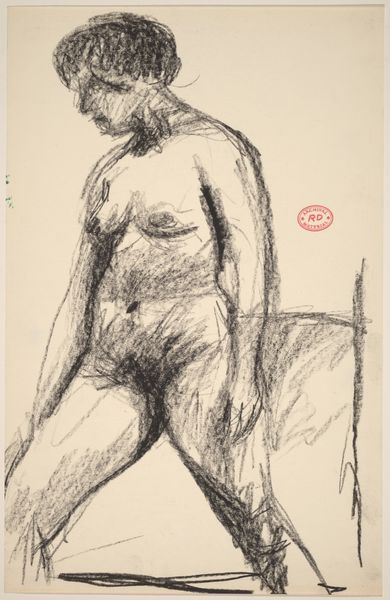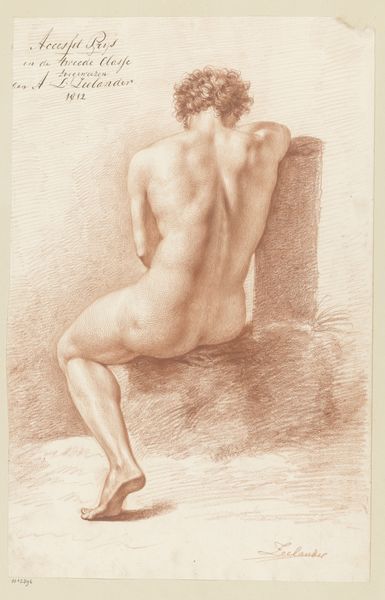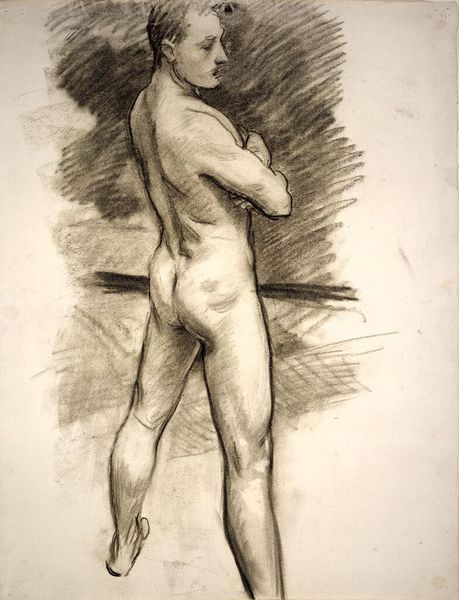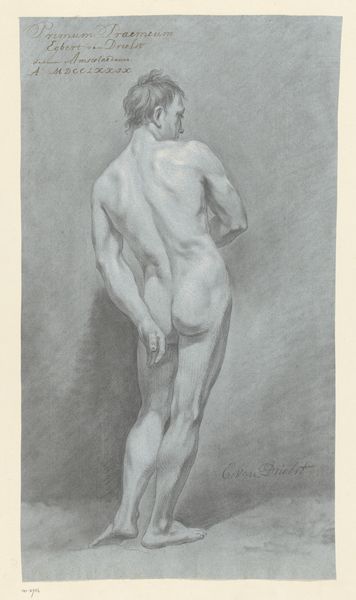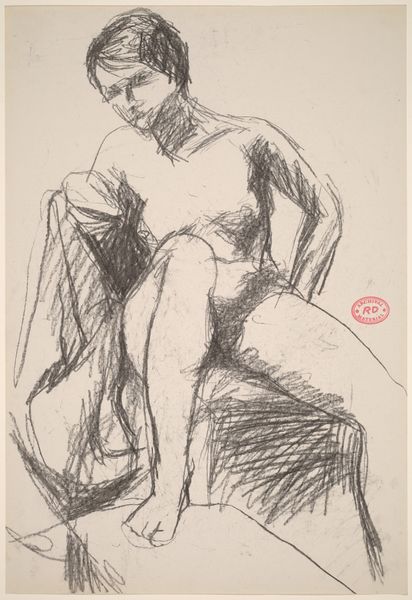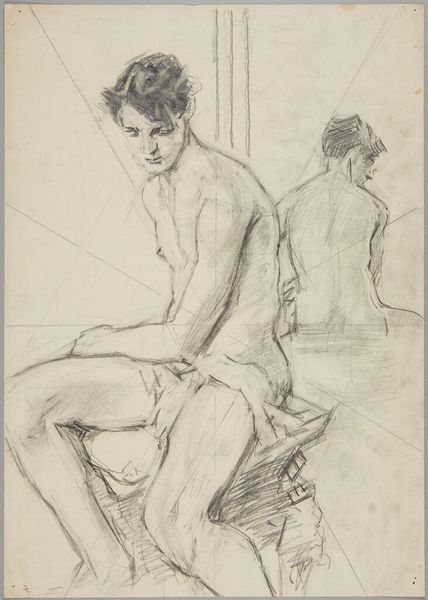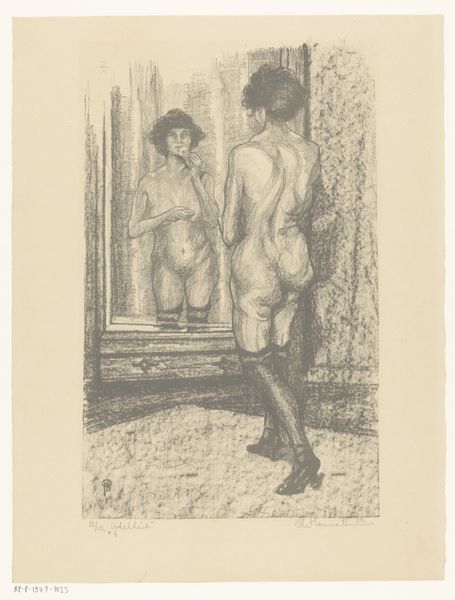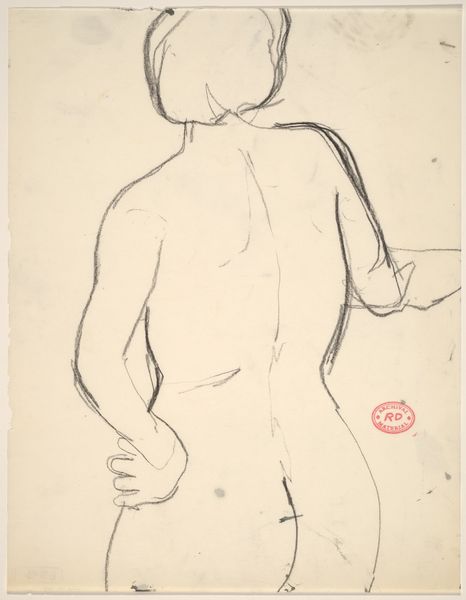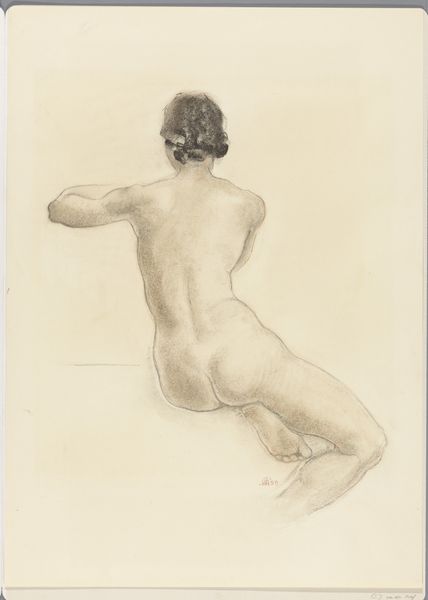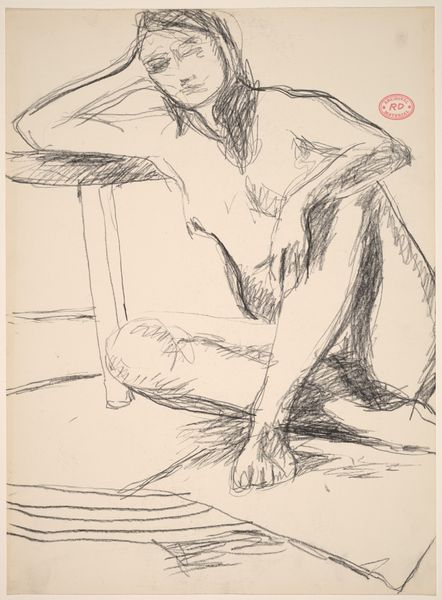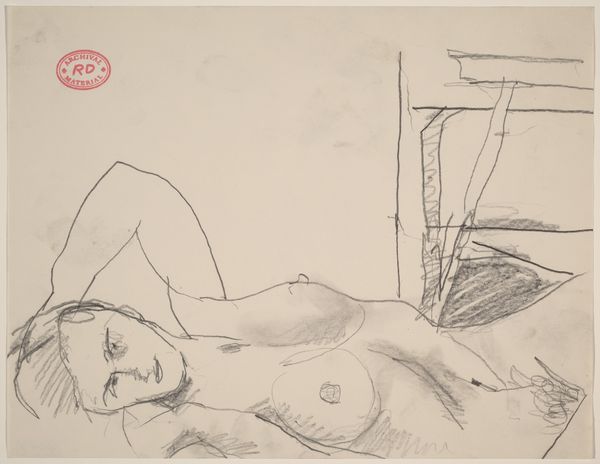
drawing, pencil
#
portrait
#
drawing
#
pencil sketch
#
figuration
#
bay-area-figurative-movement
#
pencil
#
nude
#
modernism
#
realism
Dimensions: sheet: 73.82 × 58.42 cm (29 1/16 × 23 in.)
Copyright: National Gallery of Art: CC0 1.0
Curator: Here we have Theophilus Brown's "The Model," a pencil drawing from 1982. Editor: Oh, a quiet piece! It's interesting how he captured the model gazing into a mirror, which subtly reflects the artist and the act of creation. There’s a lovely intimacy about it, a vulnerable stillness. Curator: Yes, Brown had a particular talent for portraying the human form with a certain naturalism, but also a refined touch. It reminds one of classic academic studies but infused with a distinctly modern sensibility. There’s a strong sense of line and volume. The question arises, where does the objective study end and the subjective interpretation begin? Editor: Precisely! Look how the soft hatching gives a tangible quality to the skin, almost breathing. It’s so skillfully done; it’s hard to believe it's just pencil. And yet, I think what resonates most is the emotional register, the solitude or perhaps a certain contemplation captured so well here. I find myself wondering about the model, who he was and his thoughts. Curator: Considering the era it was created, the 1980s, figuration was making a strong comeback after periods dominated by abstraction. The AIDS crisis impacted artistic expression profoundly and affected Brown personally, which inevitably circles back into his work, emphasizing themes of the body, vulnerability, and, yes, introspection. It seems the work of his hands captures something true about a time that was at times defined by pain. Editor: It definitely holds the spirit of that moment, now that you say it. There’s an enduring quality about returning to these foundational subjects. Brown gives us the familiar made deeply personal, inviting empathy across time and reminding us of the delicate balance between observing and being. Curator: It truly offers a multifaceted viewing experience; art object and human statement simultaneously. Editor: It makes one consider, in the end, who is modeling for whom, what is created in the act, and the role of art as conversation, from a long ago room that echoes across all of time and circumstance.
Comments
No comments
Be the first to comment and join the conversation on the ultimate creative platform.
